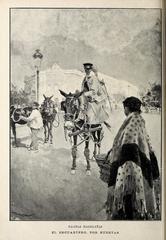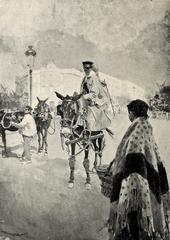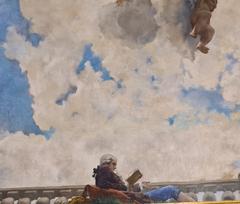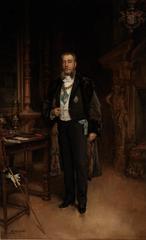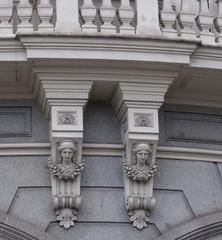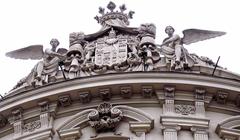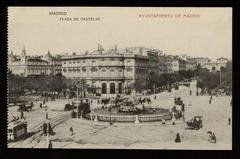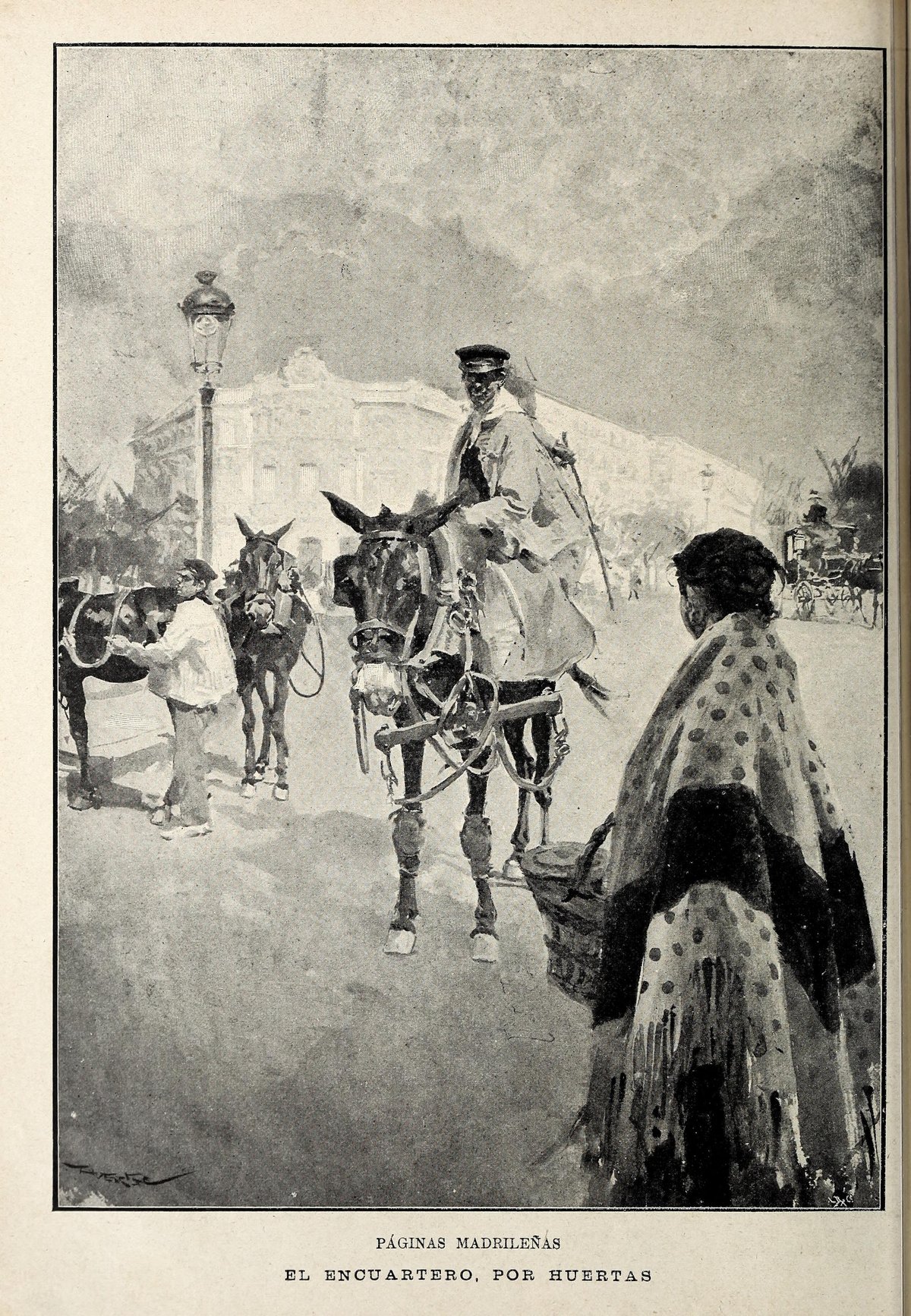
Palace of Linares: Visiting Hours, Tickets, and Complete Madrid Historical Guide
Date: 14/06/2025
Introduction
Rising gracefully from Madrid’s iconic Plaza de Cibeles, the Palace of Linares (Palacio de Linares) is a neo-baroque marvel, steeped in both grandeur and mystery. Once the opulent residence of the Marquises of Linares, this late 19th-century palace is now the headquarters of Casa de América, a vibrant cultural center fostering Spanish-Latin American relations. With its stately limestone façade, lavish interiors, and enigmatic legends, the Palace of Linares captivates visitors with a unique blend of history, artistry, and folklore (Casa de América; Madrid Tourist Info).
This guide provides everything you need to plan your visit: historical context, architectural highlights, legends, practical advice on tickets and hours, accessibility, travel tips, and nearby attractions. Whether you’re drawn by artistic treasures, ghost stories, or cultural events, the Palace of Linares offers a window into Madrid’s aristocratic past and dynamic present.
Table of Contents
- Historical Overview
- Legends and Mysteries
- Visitor Information
- Travel Tips and Nearby Attractions
- Frequently Asked Questions (FAQ)
- Visual Gallery
- Conclusion and Final Tips
- Sources and Further Reading
Historical Overview
Construction and Architecture
Commissioned in 1877 by José de Murga y Reolid, the first Marquis of Linares, and his wife Raimunda Osorio y Ortega, the Palace of Linares was conceived as a statement of aristocratic prestige (Casa de América). The couple acquired land at Plaza de Cibeles, transforming a former royal grain warehouse into a palatial estate. Designed by Carlos Colubí, with input from Adolf Ombrecht and Manuel Aníbal Álvarez, construction was completed in 1900 (Historias de Madrid).
The palace’s architecture is a testament to the Spanish neo-baroque style, lavishly decorated and inspired by French Second Empire influences. The exterior features sculptural embellishments by Jerónimo Suñol—angels, vases, and coats of arms—crafted in luminous limestone. Three grand doors topped with balconies greet visitors at the main façade (Madrid Tourist Info).
Inside, opulent materials abound: Italian marble staircases, intricate woodwork, hand-painted frescoes, and Parisian chandeliers. Highlights include:
- Grand Staircase: A marble showpiece by Suñol.
- Ballrooms and Hall of Mirrors: Lavish spaces for high-society events.
- Private Chapel: An intimate sanctuary reflecting the family’s devotion.
- Dolls’ House (Casa de Muñecas): A charming architectural curiosity by Álvarez.
- Gardens: Peaceful, landscaped grounds, providing respite from the city.
Artworks by Francisco Pradilla, Manuel Domínguez, and Alejandro Ferrant, as well as European decorative objects, further elevate the palace’s artistic pedigree (Casa de América).
The Marquises of Linares: History and Legend
José de Murga y Reolid and Raimunda Osorio y Ortega were prominent figures in Madrid’s high society, yet their story has been cloaked in both historical fact and enduring legend. According to persistent tales, the couple unknowingly married as half-siblings, later seeking papal dispensation and allegedly hiding the birth of their daughter, Raimundita, whose spirit is said to haunt the palace (Trip Tours Madrid; Guías Viajar). In reality, historical documents reveal the Marquises adopted a girl named Raimunda Avecilla, and there is no evidence of the more macabre claims (Guías Viajar). Nonetheless, these legends have become inseparable from the palace’s identity.
Decline, Restoration, and Modern Use
After the Marquises’ deaths, the palace changed hands and eventually fell into neglect, standing abandoned for decades (Historias de Madrid). In 1988, Madrid’s city council acquired and restored the property, reopening it in 1992 as Casa de América, a cultural institution dedicated to Spain-Latin America dialogue (Casa de América). Today, the palace is a protected monument (Bien de Interés Cultural since 1976) and a venue for exhibitions, conferences, and social events (Wikipedia).
Legends and Mysteries
The Palace of Linares is renowned for its eerie legends, making it a focal point for ghost tours and urban folklore:
- Ghost of Raimundita: Many claim to hear the laughter or cries of a little girl within the palace—believed to be the spirit of the Marquises’ secret daughter (Trip Tours Madrid).
- Sealed Rooms and Secret Passages: Some rooms are said to remain closed, rumored to contain family secrets, treasures, or even cursed objects (Trip Tours Madrid).
- The Linares Curse: Stories abound of misfortune befalling those who have tried to repurpose the palace, further fueling its haunted reputation.
Investigations into supposed paranormal phenomena, including electronic voice phenomena (EVPs), have made the palace a subject of fascination, though many claims have been debunked as publicity stunts or natural occurrences (Factschology).
Visitor Information
Visiting Hours
- Guided Tours: Access to the palace’s historic interiors is exclusively by guided tour.
- Fridays: 18:00 and 19:30
- Saturdays & Sundays: 11:00, 12:00, 13:00
- Casa de América Exhibitions: Monday to Friday, 11:00–20:00 (palace interiors closed for self-guided visits)
- Closures: Closed in August, on October 9th and 10th, and during select private events. Always confirm hours on the official website before visiting (Casa de América; Madridista Forever).
Tickets and Guided Tours
- General Admission: €8
- Reduced Admission: €5 (seniors 65+, children under 16, visitors with disabilities; ID required)
- Where to Buy: Tickets are sold in-person at Casa de América’s Information Point and before tours on weekends. No online sales.
- Guided Tours: Last about one hour; include an introductory video and visits to key rooms (grand staircase, ballrooms, chapel, Dolls’ House, gardens). Tours are mainly in Spanish; inquire ahead for English-language availability (Casa de América; Guias Viajar).
Accessibility and Facilities
- The palace is partially accessible for visitors with reduced mobility; some historic areas have stairs or uneven floors.
- Restrooms are available; cloakrooms and other amenities may be limited.
- Photography is generally allowed without flash; check with your guide for restrictions.
Getting There
- Address: Plaza de Cibeles, s/n, 28014 Madrid, Spain
- By Metro: Banco de España (Line 2)
- By Bus: Multiple city lines serve Plaza de Cibeles.
- Walking: Easy walk from Puerta de Alcalá, Retiro Park, and Gran Vía.
- Car: Parking nearby, but public transport is recommended due to city center traffic (Spain.info).
Visitor Guidelines
- Arrive 15 minutes before your tour.
- Bring ID for reduced admission.
- Photography rules and other site regulations must be followed.
- For families: children are welcome, and the Dolls’ House is a highlight for young visitors.
Travel Tips and Nearby Attractions
- Combine Your Visit: Explore the Cibeles Fountain, Prado Museum, Thyssen-Bornemisza Museum, Reina Sofía Museum, Retiro Park, and Gran Vía—all within walking distance.
- Best Times to Visit: Early mornings or late afternoons for fewer crowds; June is lively with cultural events.
- Check Events: Casa de América frequently hosts exhibitions, lectures, and special tours—see their agenda for updates.
- Weather: Enjoy the palace gardens in pleasant weather; note closures in August.
Frequently Asked Questions (FAQ)
Q: Can I visit the Palace of Linares without a guided tour?
A: No, entry to the palace interiors is only possible via guided tours.
Q: Are English-language tours available?
A: Tours are mainly in Spanish; inquire in advance for English availability.
Q: How do I purchase tickets?
A: Tickets are sold in person at Casa de América; no online sales.
Q: Is the palace wheelchair accessible?
A: Some areas are accessible; contact the venue for details if you have specific needs.
Q: Are photos allowed?
A: Photography is allowed in most areas without flash; check with your guide.
Q: When is the palace closed?
A: Closed in August, on October 9th-10th, and occasionally for private events.
Visual Gallery



For a virtual tour and more images, visit the Casa de América virtual tour page.
Conclusion and Final Tips
The Palace of Linares is a true jewel of Madrid, combining architectural splendor, artistic treasures, and captivating legends. Today, as Casa de América, it stands as a hub for cultural exchange and discovery. Whether you’re fascinated by its history, drawn to its myths, or seeking an enriching cultural experience, the Palace of Linares promises a memorable visit.
Tips for Your Visit:
- Always check the official website for up-to-date visiting hours and tour availability.
- Book early for guided tours, especially during busy seasons.
- Explore nearby landmarks to make the most of your time in central Madrid.
- Download the Audiala app for exclusive audio tours, cultural content, and event updates.
Sources and Further Reading
- This is a sample text. (Casa de América)
- This is a sample text. (Historias de Madrid)
- This is a sample text. (Madrid Traveller)
- This is a sample text. (Madrid Tourist Info)
- This is a sample text. (Trip Tours Madrid)
- This is a sample text. (Guías Viajar)
- This is a sample text. (Spain.info)
- This is a sample text. (Historias de Madrid)
- This is a sample text. (Madridista Forever)
- This is a sample text. (Guias Viajar)
- This is a sample text. (Audiala app)
